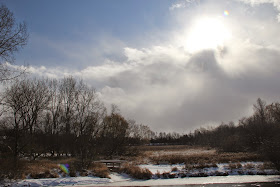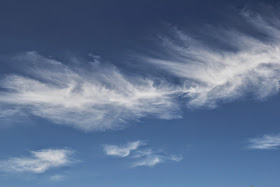Over the weekend, temperatures in Mid-Michigan dropped to a low of approximately -14 degrees Fahrenheit, but windchill temperatures were much lower dropping down to -31 degrees.
What is windchill?
Windchill is a measure of what air temperature feels like. This measure is based on the principle of
convection. A solid surface loses heat in three ways: radiation, conduction, and convection. The human body loses heat primarily through conduction and convection.
Conduction
Conduction is the direct transfer of heat from one object to another. When you touch an object that is colder than your body, some of your body's heat transfers to that object in an attempt to equalize the temperature of your body with that of the object you are touching. This is why when you hold an ice cube, the ice melts and your hand gets cold. Conduction also takes place between you and the air - your body warms up the molecules in the air that contact your body and your body cools slightly.
Convection
What happens if the air around your body is not still? If the air is moving, it pushes the warm air away from the surface of your body and constantly replaces it with new air. The process of conduction is repeated with this new air - this transfer of heat to moving air is known as convection. Because the air is moving and your body is trying to equalize temperatures, heat is lost at a higher rate than it would be to still air. This means that the air feels colder than it actually is - this difference in feel is measured as windchill.
Windchill is calculated using one of several formulas. This data has been collected in tables such as the one below from the
National Weather Service.
Why is windchill important?
If skin is exposed to temperatures that are too cold, it will begin to freeze. This condition is known as frostbite. Because convection causes the skin to lose heat much more rapidly than it would in still air, low windchill temperatures indicate a greater danger of frostbite. The chart above shows the time it takes for frostbite to set in at various windchill temperatures.
Many schools do not allow students outside for recess if windchill (or actual) temperatures drop below a certain level. Some schools may even cancel school when temperatures drop below a certain threshold. If yesterday (15 FEB 2015) had been a school day, most of the schools in the area would have probably cancelled classes due to the windchill.
























.JPG)



























%2B2.jpg)
%2B1.jpg)
%2B2.jpg)

%2B1.jpg)